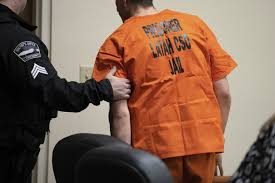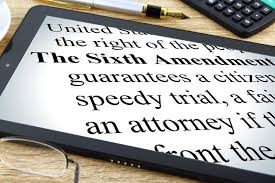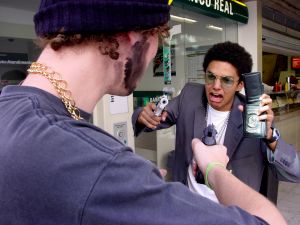Sherman, Texas Probation Revocation Attorney: The Right to a Speedy Hearing (Part 3)
 Judging delay is one area where analysis under the due diligence doctrine remains relevant. Under the due diligence doctrine, the court looks to whether “reasonable investigative efforts [were] made to apprehend the person sought.” Peacock, 77 S.W.3d at 288. Per Peacock, such a requirement “helps a court determine whether the probationer cannot be found because he is trying to elude capture or because no one is looking for him,” and in the case of the latter “the State should not benefit by doing nothing meaningful to execute a capias.” The Court of Criminal Appeals has made clear that merely sending a letter to the Defendant’s home and uploading a warrant into the TCIC database does not constitute diligence on the part of the State. Peacock, 77 S.W.3d at 288-89. A probation who stays in state at a known address and known phone number, without probation coming to look for him and arrest him, has a great due diligence claim. A Texas resident who stays in the State at a known address and phone number also can show unreasonable delay if a warrant is issued at large for their arrest for a new crime and no effort is made to apprehend them. Leaving the state or country, however, can cause the speedy trial right to be tolled, and doing so is a factor that will hurt the defendant in a speedy trial analysis.
Judging delay is one area where analysis under the due diligence doctrine remains relevant. Under the due diligence doctrine, the court looks to whether “reasonable investigative efforts [were] made to apprehend the person sought.” Peacock, 77 S.W.3d at 288. Per Peacock, such a requirement “helps a court determine whether the probationer cannot be found because he is trying to elude capture or because no one is looking for him,” and in the case of the latter “the State should not benefit by doing nothing meaningful to execute a capias.” The Court of Criminal Appeals has made clear that merely sending a letter to the Defendant’s home and uploading a warrant into the TCIC database does not constitute diligence on the part of the State. Peacock, 77 S.W.3d at 288-89. A probation who stays in state at a known address and known phone number, without probation coming to look for him and arrest him, has a great due diligence claim. A Texas resident who stays in the State at a known address and phone number also can show unreasonable delay if a warrant is issued at large for their arrest for a new crime and no effort is made to apprehend them. Leaving the state or country, however, can cause the speedy trial right to be tolled, and doing so is a factor that will hurt the defendant in a speedy trial analysis.
 Sherman & Plano, TX Criminal Defense Lawyer Blog
Sherman & Plano, TX Criminal Defense Lawyer Blog


 But, despite the elimination of the common law due diligence “scheme,” the Court of Criminal Appeals has recognized in both pre-Garcia case law and post-Garcia case law that there exists a Constitutional speedy revocation hearing right even where claims of common law due diligence do not lie. The Court of Criminal Appeals specifically held this to be the case in Ballard v. State, stating “[a]lthough such a defendant cannot advance a due diligence defense, he has the statutory twenty-day remedy, and in appropriate circumstances, may have a Constitutional speedy hearing claim under Barker v. Wingo.” 126 S.W.3d 919, 921 n.8 (Tex. Crim. App. 2004)(citations omitted). The 20-day remedy is found in Texas Code of Criminal Procedure Article 42A.751(d) (If the defendant has not been released on bail as permitted under Subsection (c), on motion by the defendant, the judge who ordered the arrest for the alleged violation of a condition of community supervision shall cause the defendant to be brought before the judge for a hearing on the alleged violation within 20 days of the date the motion is filed.)
But, despite the elimination of the common law due diligence “scheme,” the Court of Criminal Appeals has recognized in both pre-Garcia case law and post-Garcia case law that there exists a Constitutional speedy revocation hearing right even where claims of common law due diligence do not lie. The Court of Criminal Appeals specifically held this to be the case in Ballard v. State, stating “[a]lthough such a defendant cannot advance a due diligence defense, he has the statutory twenty-day remedy, and in appropriate circumstances, may have a Constitutional speedy hearing claim under Barker v. Wingo.” 126 S.W.3d 919, 921 n.8 (Tex. Crim. App. 2004)(citations omitted). The 20-day remedy is found in Texas Code of Criminal Procedure Article 42A.751(d) (If the defendant has not been released on bail as permitted under Subsection (c), on motion by the defendant, the judge who ordered the arrest for the alleged violation of a condition of community supervision shall cause the defendant to be brought before the judge for a hearing on the alleged violation within 20 days of the date the motion is filed.) A Defendant formally accused of violating probation also has the right to a speedy revocation hearing. In addition to statutory provisions addressing timeliness in motions to revoke, the Court of Criminal Appeals has historically recognized two sources of law which provide for the right to a speedy revocation hearing: (1) the statutory and former common law doctrine of due diligence, and (2) Constitutional speedy hearing rights under Barker v. Wingo. 407 U.S. 514 (1971). of due diligence has been superseded by statute in Article 42A.751(d).
A Defendant formally accused of violating probation also has the right to a speedy revocation hearing. In addition to statutory provisions addressing timeliness in motions to revoke, the Court of Criminal Appeals has historically recognized two sources of law which provide for the right to a speedy revocation hearing: (1) the statutory and former common law doctrine of due diligence, and (2) Constitutional speedy hearing rights under Barker v. Wingo. 407 U.S. 514 (1971). of due diligence has been superseded by statute in Article 42A.751(d). The reasons for the delay of a trial are important under the second prong, and the State will be required to put forward their reasons at a dismissal hearing. Right now, blood and drug results from the State laboratory are taking six months or so to process. A person sitting in jail on a misdemeanor is heavily prejudiced by waiting that long on a chemical result. A person awaiting felony trial is not as prejudiced per the caselaw, but after nine months or so prejudice can sometimes be shown. A lawyer should consider filing a speedy trial motion in any trial that will be lengthily delayed by chemical testing, DNA testing or other factors under the State’s control.
The reasons for the delay of a trial are important under the second prong, and the State will be required to put forward their reasons at a dismissal hearing. Right now, blood and drug results from the State laboratory are taking six months or so to process. A person sitting in jail on a misdemeanor is heavily prejudiced by waiting that long on a chemical result. A person awaiting felony trial is not as prejudiced per the caselaw, but after nine months or so prejudice can sometimes be shown. A lawyer should consider filing a speedy trial motion in any trial that will be lengthily delayed by chemical testing, DNA testing or other factors under the State’s control. The Texas Court of Criminal Appeals analyzes both speedy trial and speedy revocation motion matters under the factors set forth by the United States Supreme Court in Barker v. Wingo, 407 U.S. 514 (1972). These factors include: (1) the length of the delay, (2) the reasons for the delay, (3) the defendant’s assertion of the right (to a speedy trial), and (4) the possible prejudice to the Defendant as a result of the delay. As applied to this case, the State cannot overcome the presumptive prejudice associated with a thirty eight month delay in executing the capias, a similar delay in hearing from the time of issuance, and at least three of four Barker factors weigh in favor of dismissal.
The Texas Court of Criminal Appeals analyzes both speedy trial and speedy revocation motion matters under the factors set forth by the United States Supreme Court in Barker v. Wingo, 407 U.S. 514 (1972). These factors include: (1) the length of the delay, (2) the reasons for the delay, (3) the defendant’s assertion of the right (to a speedy trial), and (4) the possible prejudice to the Defendant as a result of the delay. As applied to this case, the State cannot overcome the presumptive prejudice associated with a thirty eight month delay in executing the capias, a similar delay in hearing from the time of issuance, and at least three of four Barker factors weigh in favor of dismissal. Going back to the Constitution of the United States, American citizens are guaranteed a speedy and public trial. The public part is why a Court cannot bar you from entering to watch a trial unless you are a witness, but the speedy part has been developed over the years. I will concentrate on the State of Texas right to a Speedy Trial this week, which is overwhelmingly similar to the Federal Right but without a few federal specific statutes that can effect federal criminal cases. Additionally, citizens also have a right to a speedy hearing if the State of Texas files a motion to adjudicate or revoke probation, which is the procedure upon an alleged probation violation to impose sentence or modification.
Going back to the Constitution of the United States, American citizens are guaranteed a speedy and public trial. The public part is why a Court cannot bar you from entering to watch a trial unless you are a witness, but the speedy part has been developed over the years. I will concentrate on the State of Texas right to a Speedy Trial this week, which is overwhelmingly similar to the Federal Right but without a few federal specific statutes that can effect federal criminal cases. Additionally, citizens also have a right to a speedy hearing if the State of Texas files a motion to adjudicate or revoke probation, which is the procedure upon an alleged probation violation to impose sentence or modification. Section 7.02(b) states “If, in the attempt to carry out a conspiracy to commit one felony, another felony is committed by one of the conspirators, all conspirators are guilty of the felony actually committed, though having no intent to commit it, if the offense was committed in furtherance of the unlawful purpose and was one that should have been anticipated as a result of the carrying out of the conspiracy.”
Section 7.02(b) states “If, in the attempt to carry out a conspiracy to commit one felony, another felony is committed by one of the conspirators, all conspirators are guilty of the felony actually committed, though having no intent to commit it, if the offense was committed in furtherance of the unlawful purpose and was one that should have been anticipated as a result of the carrying out of the conspiracy.” One of the most common misconceptions in the law is that one actually has to commit a crime themselves to face criminal charges. Better said, it is a misconception that a person must commit all the elements of an offense themselves to be convicted of a crime. However, old distinctions such as “accessory” and “accomplice” have been abolished under Texas law, and a person who commits a crime with the intent that it be committed can be convicted of the offense.
One of the most common misconceptions in the law is that one actually has to commit a crime themselves to face criminal charges. Better said, it is a misconception that a person must commit all the elements of an offense themselves to be convicted of a crime. However, old distinctions such as “accessory” and “accomplice” have been abolished under Texas law, and a person who commits a crime with the intent that it be committed can be convicted of the offense. Not to be outdone by the wisdom of the Oklahoma Legislature, our braniacs in Austin last year enacted “aggravated” driving while intoxicated provisions similar to the Sooner state, whereby a first time offender now faces a year in jail if the person 1) commits the offense of driving while intoxicated, and 2) “If it is shown on the trial of an offense under this section that an analysis of a specimen of the person’s blood, breath, or urine showed an alcohol concentration level of 0.15 or more at the time the analysis was performed.” The offense is enhanced from a Class B to a Class A misdemeanor.
Not to be outdone by the wisdom of the Oklahoma Legislature, our braniacs in Austin last year enacted “aggravated” driving while intoxicated provisions similar to the Sooner state, whereby a first time offender now faces a year in jail if the person 1) commits the offense of driving while intoxicated, and 2) “If it is shown on the trial of an offense under this section that an analysis of a specimen of the person’s blood, breath, or urine showed an alcohol concentration level of 0.15 or more at the time the analysis was performed.” The offense is enhanced from a Class B to a Class A misdemeanor. How do you or a loved one end up in the Eastern District of Texas, particularly the Sherman division, sitting in the Fannin County Jail in Bonham, Texas on a drug conspiracy charge? Well, the Sherman Division (with courthouses in Sherman and Plano, Texas) is a choice forum for the United States Department of Justice. They are much more likely to get a conviction in the Sherman Division of the Eastern District of Texas than in Dallas, Texas, located in the Northern District of Texas. The Sherman Division is much more white, conservative and affluent than Dallas. The makeup of jury pools is overwhelmingly white (about 85%, compared to less than 50% in Dallas), and the Sherman Division venue contains Collin and Denton counties, wealthy suburban counties in which all persons are more likely to be more white collar and conservative.
How do you or a loved one end up in the Eastern District of Texas, particularly the Sherman division, sitting in the Fannin County Jail in Bonham, Texas on a drug conspiracy charge? Well, the Sherman Division (with courthouses in Sherman and Plano, Texas) is a choice forum for the United States Department of Justice. They are much more likely to get a conviction in the Sherman Division of the Eastern District of Texas than in Dallas, Texas, located in the Northern District of Texas. The Sherman Division is much more white, conservative and affluent than Dallas. The makeup of jury pools is overwhelmingly white (about 85%, compared to less than 50% in Dallas), and the Sherman Division venue contains Collin and Denton counties, wealthy suburban counties in which all persons are more likely to be more white collar and conservative.